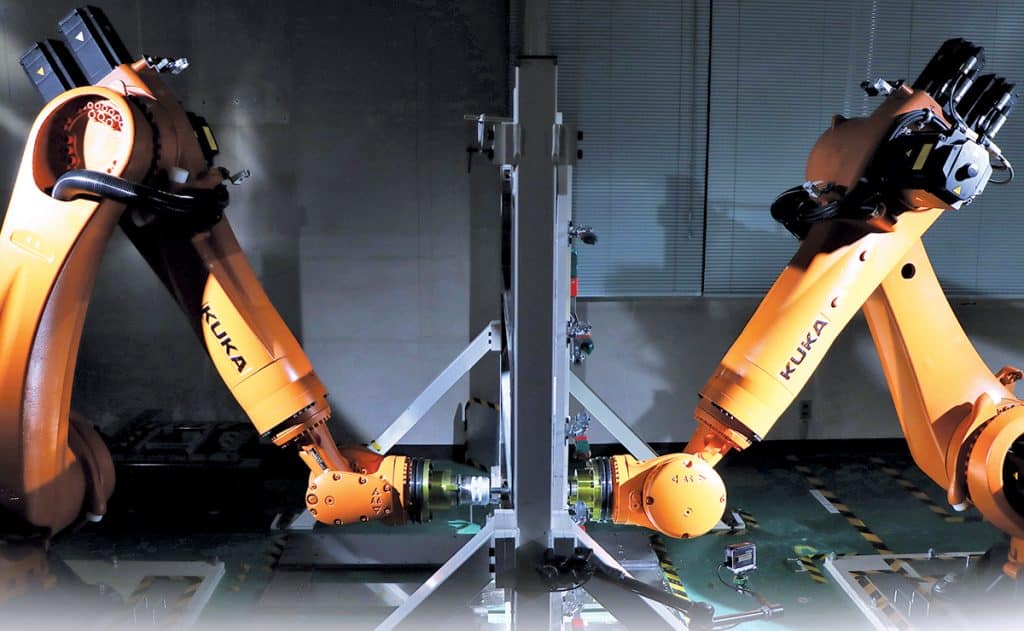
(Image credit: Nissan)
If you have ever restored or repaired a classic car or truck, it is likely that you know the struggle of locating hard-to-find parts. In some cases, it takes months or even years to find that elusive piece. Panels, trim and other parts can often bring a restoration project to a halt. Well those days may be coming to an end.
3D printing has made its way into the classic car restoration industry and they are doing some amazing things when it comes to replicating smaller rare parts, but what if you need an entire steel body or floor panel? Can a 3D printer make that with near-perfect accuracy? If so, we haven’t heard about it.
That is where Nissan has stepped in. They have taught robots how to create entire body panels and much, much more out of steel with a process called dual-sided dieless forming. This breakthrough technology could very well revolutionize how replacement parts for vintage vehicles are recreated.
Traditionally these panels were stamped out of steel using massive presses and dies that are extremely intensive to form and took a long time and money to make. It simply isn’t practical to use these traditional methods to recreate parts.
With Nissan’s dual-sided dieless forming, two robots working from opposite sides of a sheet of steel, use diamond-coated tools to gradually shape the steel into useful parts. This technically isn’t brand new technology, but prior to Nissan’s breakthrough, it was difficult to make both robots operate synchronously with accuracy.
There are two parts of this success story. First are the mirrored diamond coated tools they developed. The coating reduces friction and removes the need for lubrication. No lubrication means the consistency of the work is superior. These tools are also relatively low cost to produce and also environmentally friendly to operate. One of the best parts of this tool technology, pioneered by Nissan, is that the steel will retain a perfectly smooth surface so the part can be painted immediately after being produced.
Secondly, the programming logic used on these robots is where the magic happens. Nissan has calibrated them to work together with near pin-point accuracy. This accuracy allows the formation of detailed convex and concave shapes. Something that was only possible with traditional stamp and die methods.
Currently, it can take up to 20 hours to form one body panel. While this is indeed a fraction of the time it would take to create a die (which could take up to a year in some scenarios), This technology isn’t yet available to recreate a rear panel for an Oldsmobile F-88. It is however Nissan’s hope that they can continue to improve on this technology and increase the speed of their production. They could then commercialize this for the aftermarket industry.
Below are two great videos of these robots in action. In the first, watch as each robot and their tool heads form the metal from both sides, gently pushing and molding it, creating intricate concave and convex forms as required. In the second video the engineers explain how it all works however, you will likely need to turn on English closed captioning unless you can understand Japanese.

